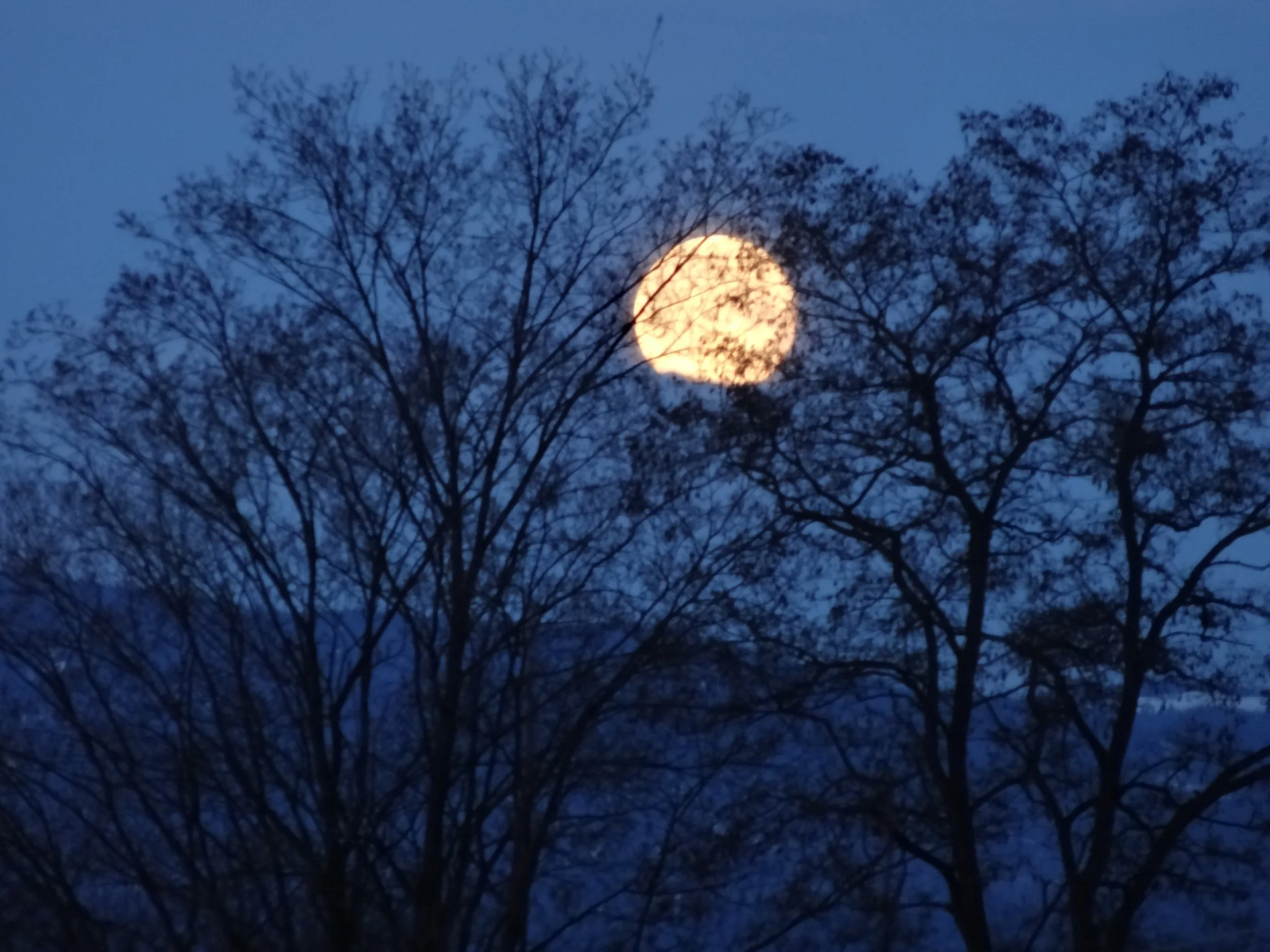Okanagan Lake, Vernon - August 19, 2023, 5:36 pm
Forest fires run down valley crevices and along shorelines in the Okanagan these past weeks. The unpredictability of wind and heat, people flocking here to fight the rageful fires moving towards people’s homes. The people in those homes – children and pets and stuffed animals ‒ under their arms, fleeing. Fire trucks and defenders moving towards “the structures” to take a stand against all that heat.
We had been on Salt Spring Island for almost two weeks. Hot there, yes, but not the 37 and steady we left behind. Our first day on the island, my partner danced around the campsite amidst a light rain ‒ the first we had felt on our skin in over a month. It’s hard to explain just how dry the Okanagan gets ‒ think Christmas tree left up for a few extra weeks with no water in the bowl, needles jumping off as you heave it out the door. Think the driest twigs you scavenge to start your campfire, how easily they ignite.
We drove towards fires in all directions, tracing maps for roads that could still lead us home ‒ zig-zag maneuvers in a war zone. Are the animals as terrified as us, I wonder? They must sense potential for this fiery rage. One friend whose home was encircled by forest fires, yet saved, talked about the two deer and baby Bambies outside her window that seemed to sense something wrong. “Where are they now,” she wondered, worried about both their homes.
Two days into the fires, I drag myself out of bed to hit my yoga mat by 7:30 a.m. For the first three days, I could barely get moving ‒ so sad I was, so low and void of energy. The last thing I wanted to do was get up early every day and do yoga. Palms to chest, chant Om and the devotion to Patanjali, tune into our own sweet breath. Each morning started with lying on our backs doing a few gentle poses, tiny tears escaping the corner of my eye, heading towards my ear. Lesson One: Be present to our feelings; don’t push them away.
When I saw Chicago and New York, Ottawa ‒ hazed in the smoke of our Canadian fires, I must admit to a dark streak of satisfaction. I definitely didn’t want the trees burning, at all, nor critters running or flying to escape the heat and haze. Nor do I want houses or businesses destroyed by fires, all that hard work and melting of memories grounded in our concrete things. I was glad, however, that if there be fire, more people be exposed to what it feels like to live inside all that smoke. Maybe then, hands in prayer ‒ possibly, change.
Raw throat. Hazy brain. Stay inside day after day. Air quality numbers: 10, 3, 7, 9 ‒ decide how far to walk the dog. How red is the sun? The moon? Red the indicator of just how much smoke fills our skies. Windows closed. Air conditioning? Circulating air will only bring in more smoke. Heavy body flat line deflated hope. Fire and smoke have paralyzed our bodies, our brains ‒ non-functioning and expected to go on. Even the sharpest amongst us want to go back to bed.
Lesson Two: Compassion. My yoga teacher says, we must first have compassion for ourselves before we feel compassion for others. I have never been one to easily have compassion for my own self, to be kind and nurturing. I was resistant to this yoga retreat, scared even. Would it be too hard? Can my muscles handle seven days? Sleeping might just be better, today. I nurture myself with each chant and forward bend. Honoring my sadness of flames in houses and burning trees, animals and humans frazzled and running.
Some of us believe there is something bigger than us, beyond us ‒ no heaven and hell for me or coming around for another life. And yet, there does seem to be some energy, some life force interconnecting and propelling all of life along. With all our interference ‒ our horrendous contributions to making our world so darn hot ‒ we’ve thrown natural cycles into a rage. Devastating floods and fires, hurricanes and bizarre storms. Left alone, the natural world would flourish. With us around, well.
Blue skies come so soon that it all feels like a dream. We can even ignore that light haze in the distance until we take a long bike-ride and swim that tells us otherwise. Raspy voice and sore throat as we wheel into our garage. The fires still burn, after all ‒ in West Kelowna and outside Yellowknife and Washington state, but also this summer in Greece and Spain, images of Lahaina charred into our brains.
I’m always one to see the silver lining, and bright side of things – and indeed, I can see this too ‒ the hard work of fire-folks saving houses and structures, whole cities. But wouldn’t it be much better if we were not in this war? Or on the front lines? On edge of when it will happen again? With our families in our homes, safe and eating ice cream or vacuuming the floor, deer wandering outside our window, simply eating leaves.





